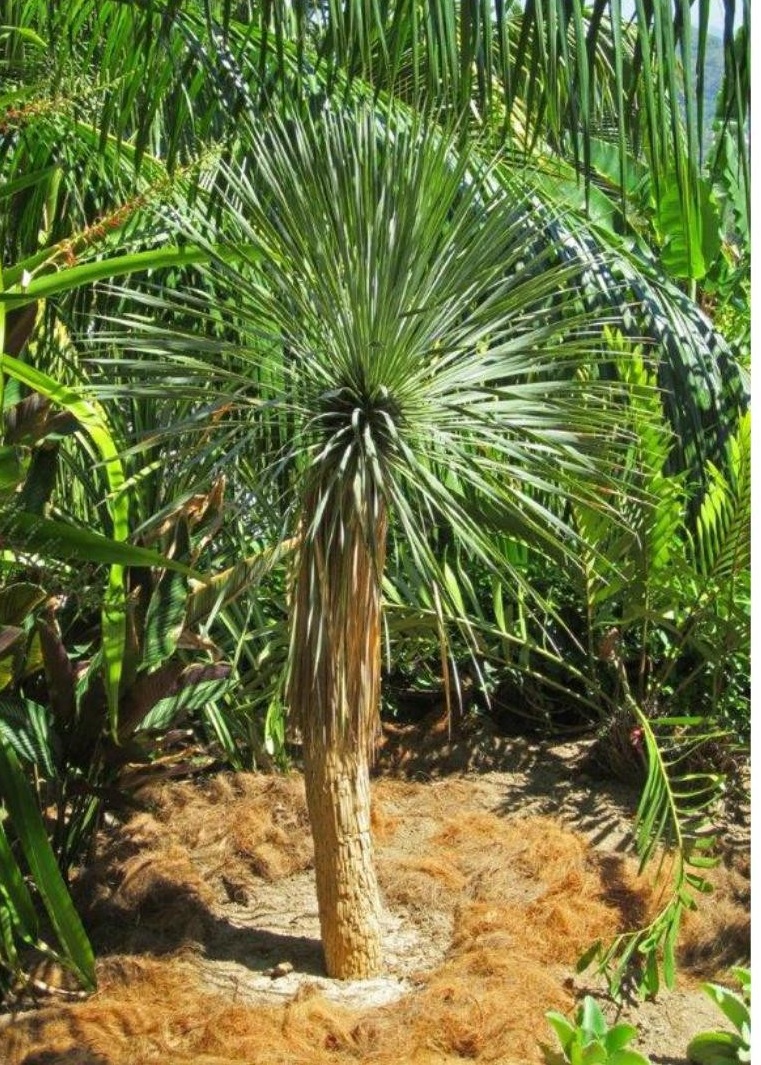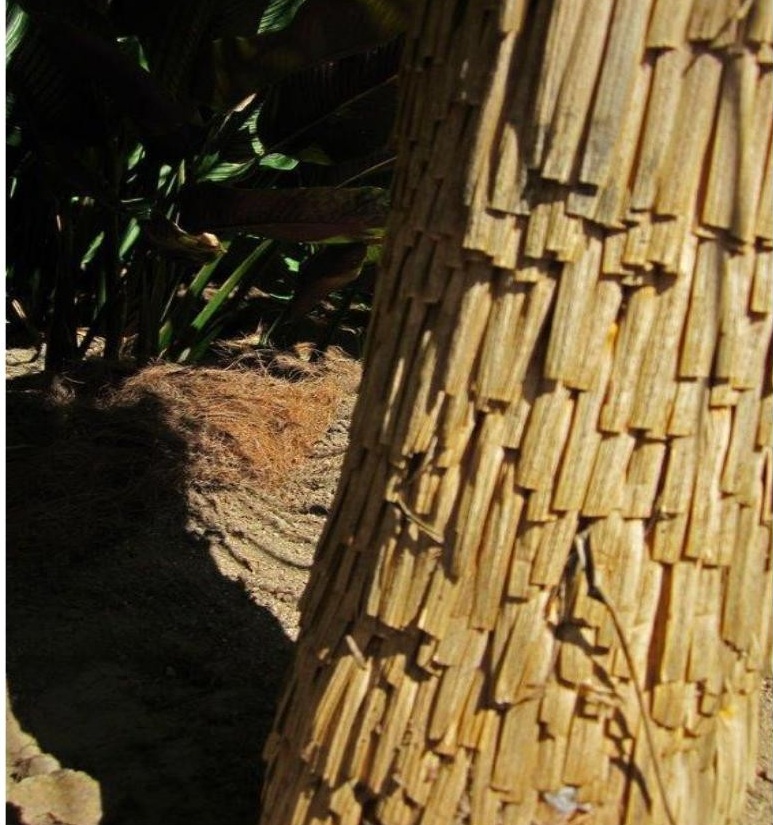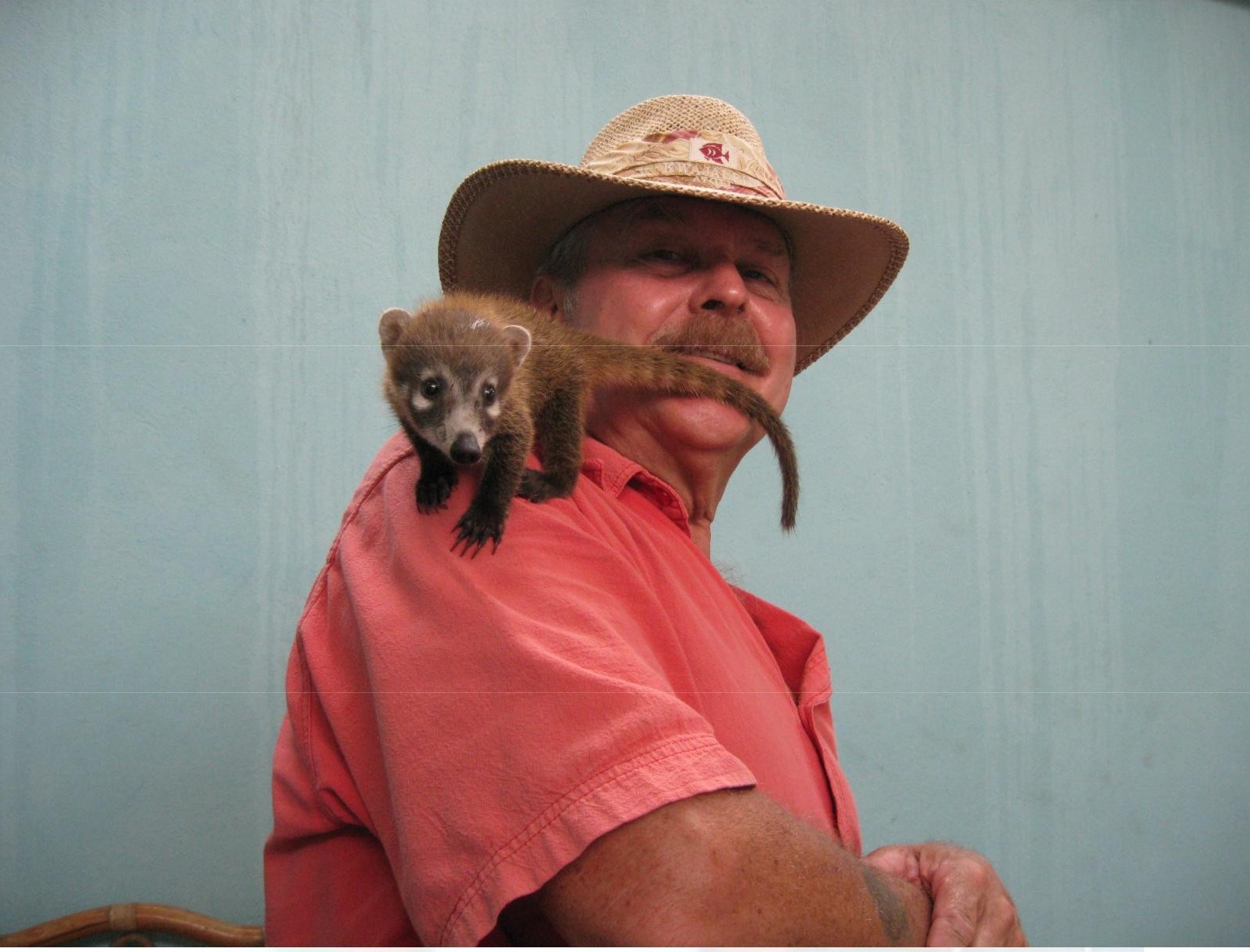By Tommy Clarkson from the April 2015 Edition
(Yucca Rostrata)
Family: Asparagaceae
Also known as: Silver Yucca, Big Bend Yucca, Blue-Beaked Yucca, Old Man Yucca and Adam’s Needle
Around here, as a result of my (now nearing) nearly 100 different species of palm trees), some folks call me “The Palm Guy”. But to that somewhat fun “handle” I feel I must assert that these comprise only about 1/8th of the total diversity of sub-tropical and tropical plants that thrive here in Ola Brisa Gardens. The Beaked Yucca, for instance, is one of my personal favorites and they comfortably co-exists between an African Oil Palm and Old Man Palm in a row comprised of five different varieties of cycads!
Of the approximately forty different species of Yucca, this is one of the most beautiful. Its uniquely attractive trunks are covered with short orange-brown shag from the old, dead leaves.
Native to Northern Mexico, as well as Arizona, New Mexico and Texas in the U.S., this interesting evergreen derives its name from its beak shaped seeds. It is one of the hardiest species of the trunked yuccas. When larger it is deer-resistant, hummingbird-friendly and should be able to handle temperatures all the way down to 32 degrees Fahrenheit (0 C.)!
When younger, this makes a great container plant but as it matures it develops that interesting trunk. One which, by the way, will allow the Beaked Yucca to attain an ultimate height of around twelve to fifteen feet (3.6 – 4.5 meters). . . taking decades as this is a slow grower.

As to where it likes to ensconce its roots, well, your basic, average, gritty, well-draining variety of suelo will do. Sol? Yep, full to partial. Agua? Yes, but only once every month or so. Keep in mind its love for rocky soils that you are sure will not flood during heavy rains. The Yucca Rostrata is most intolerant of waterlogged soils.
Flowering in the spring, summer and early autumn, its large clusters of white flowers are bell shaped at the ends of yellow-orange colored stalks and glorious to behold! That flora stands atop two foot, long, waxy, fairly supple and a bit arching yet appearing stiff-like leaves which are pale bluish green to light gray, linear and grow to around 18 inches (45.7 cm). Its leaf margins are a yellowish-white with strands of fiber that appear to be peeling as they form a dense rosette atop the stems.
Its old leaves, if left alone, can form a “beard” or skirt similar to that of some palm trees which, if properly trimmed and maintained, create a very attractive,manicured effect.
I’ve read but cannot confirm that this may have been one of several plants cultivated by pre-Columbian tribes of Mexico and Central America as these cultures were significantly advanced in use of fiber technology. Pursuing this further, supposedly, Cortez discarded his metal armor in favor of Aztec textile armor as it was more effective against the Aztec obsidian spear and arrow points which would shatter and the shards would work their way through the armor.
When planting, do so in a wide, shallow hole which is a bit wider than the spread of its root system. After filling the hole with well-draining soil avoiding air pockets place a three inch (7.6 cm) layer of organic mulch around the planting area. But ensure to keep the mulch at least a foot from the base of the plant in order to prevent root rot. Finally, initially water your new “baby” heavily so as to ensure its deepest roots get a good, solid drink.
Yet another bonus to this plant is that, as noted by Robert Lee Riffle, the Beaked Yucca “is perfectly at home near the shore and a valuable addition to the repertory of plants that are somewhat tolerant of salty air and saline soil.”
To again quote “he whose work I so greatly admire”, Riffle has written of the importance of acquiring plants such as these only through bona fide, licensed nurseries. He correctly asserts that, “Digging (endangered) plants out of the wild not only is unconscionable in an environmental sense, but the plants usually always die within a few months because of root damage.”
As to pests and diseases keep an eye out for Root Rot, grubs or Desert Beetles at their larval stage which feeds on the roots. I’d suggest, as a soil treatment, the application of Diazinon granules. Final word of warning gophers love the taste of its roots!


For back issues of “Roots”, gardening tips, tropical plant book reviews and videos of numerous, highly unique eco/ adventure/ nature tours, as well as memorable “Ultimate Experiences” such a Tropical Garden Brunches. Visit us at.. www.olabrisagardens.com
Download the full edition or view it online
—
Tommy Clarkson is a bit of a renaissance man. He’s lived and worked in locales as disparate as the 1.2 square mile island of Kwajalein to war-torn Iraq, from aboard he and Patty’s boat berthed out of Sea Bright, NJ to Thailand, Germany, Hawaii and Viet Nam; He’s taught classes and courses on creative writing and mass communications from the elementary grades to graduate level; He’s spoken to a wide array of meetings, conferences and assemblages on topics as varied as Buddhism, strategic marketing and tropical plants; In the latter category he and Patty’s recently book, “The Civilized Jungle” – written for the lay gardener – has been heralded as “the best tropical plant book in the last ten years”; And, according to Trip Advisor, their spectacular tropical creation – Ola Brisa Gardens – is the “Number One Tour destination in Manzanillo”.




You must be logged in to post a comment.